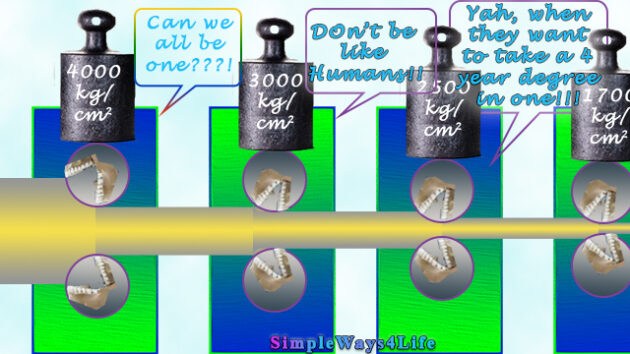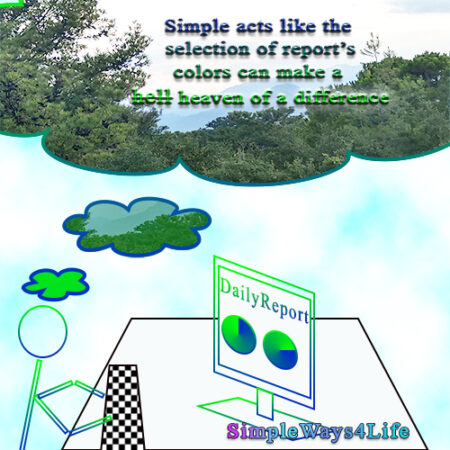We design our manufacturing process based upon our collective knowledge. This knowledge includes science and life experience. When we try to see the final process we had designed from the life point of view, we shall see that it reflects the truth of our life. So if you can’t see your life or work from a helicopter view, give yourself some time to reflect on any process i.e. repeated step in your life or work. It will tell you a lot. This article reflects the lessons learned from metal rolling process on our life and work. It allows you to see your life in a clear way but from a different prospective.
We are formed by rolling through life and work and in both scenarios we roll others. In this article know the rolling process technology, how it affects us? and, how we affect it?
What is the rolling process?
I would like to bring the definition of Wikipedia due to its simplicity and then to elaborate upon it. Although my career was in the maintenance and maintenance management for 25 years. Nearly 20 Years of them were in the iron and steel industry. That brought me closer to the melting, casting and rolling of steel bars as processes not only for sake of maintenance.
In metalworking, rolling is a metal forming process in which metal stock passes through one or more pairs of rolls reduce the thickness, to make the thickness uniform, and/or to impart a desired mechanical property. The concept is similar to the rolling of dough. Rolling is classified according to the temperature of the metal rolled. If the temperature of the metal is above its recrystallization temperature, then the process is known as hot rolling. If the temperature of the metal is below its recrystallization temperature, the process is known as cold rolling.
Wikipedia
This definition is simple and straight forward but is missing the shaping target. Rolling is not only to reduce the thickness. It makes some plastic deformation in the cross section of the stock passing through the pair of rollers. So, you start by a square cross section and end up in a circular one. Or, you may start by a square cross section and end up in an ‘L’, ‘C’ or ‘U’ shaped cross section. More over, You can end up in a tube, i.e. a cylinder hollow from inside. Even you can shape the surface by making ribs and writing prominent text on its surface.
Forces needed for rolling
If you want to see an example of a product used in your everyday life; look for the aluminum foil used in cooking. The 16 micro meter thickness foil had started from an ingot of around 16 cm thickness. This means 10,000 times reduction in thickness. It is good to understand that this 10,000 times reduction in thickness will yield 10,000 times extension in length.
This deformation process exerts strong force on the original shape. It is hard on the equipment and the stock or the metal in its intermediate form as slabs, ingots or billets. The metal had already passed through a tougher transformation through melting to reach this intermediate form. However the analogy with the melting process will be in a nearby article.
Just to get the order of magnitude of the rolling forces and power needed lets assume a condition from an online example. Assume that you want to reduce the thickness of an Aluminium strip of 400mm wide from 25 mm to 20mm using a hot rolling process. Then you would need a 250Mpa rolling force. That’s roughly equals to applying 2500kg on each square centimeter of the strip. By the way, the strip here is our stock. And, to achieve this you need about 11 M Watt driving power. That’s around 15M HP. In real life that’s the combined power of 15 Tesla S Plaid cars.
How to reflect the rolling process lessons on life and work?
First, There is a transformation intention
Without the need for transforming the stock of metal or the original shape of the intermediate metal piece into another shape, why would we pay such effort? Also, the end shape or target shape after the several transformation steps guides the design of each step. Without clear end target for the transformation, you won’t start transformation as you can’t design and calculate the effort i.e. the power needed.
Second, The force is proportional to the change
If you keep everything else constant, for every reduction size, there is a certain force that you need to apply. So in the example of the Aluminium strip, to reduce it from 25 mm to 20 mm we needed a certain pressure from the rolling rolls of about 2500kg/cm2. This pressure needs a driving power of around 15 Tesla S Plaid cars.
Suppose that we want to reduce the strap only from 25mm to 24 mm. Then then we need only 2.2Mw i.e. only 3 Tesla S Plaid are needed (The 1Tesla S Plaid has a combined power of 1000Hp).
Third, You can’t change it all in one shot.
However, the other end of the stick can be impossible i.e. reducing from 25mm to 1 mm at one stage. Using only the calculation of power it seems that we will need around 55MWatt driving power. But, there are other factors that we need to question. We can make an analogy to a teacher trying to entrench a big chunk of the math syllabus in his students mind in one lecture.
- If there are rolling rolls that would be able to apply the needed torque?
- The force applied to stock to be transformed in shape i.e. deformed is reflected to the rolls.
- Can the teacher exert this effort?
- Also there are some design and material considerations as Is there a possible bite angle to push the stock between the rolls?
- When trying to reduce strip from 25mm to 1 mm, the bite angle would reach around 60 degrees. That’s tribble the recommended 20 degree angle.
- This will cause the force between the rolls and strip to push the strip or stock backward not forward.
- Same applies for the students and the teacher. Their rejection for the math would be large enough to prevent them from even catching the first few lines or subtitles.
- There is the force applied to the material for shaping. The target is to enhance the properties of the material to be useful at the end of the process. Applying too much force can damage the material and the students.
Fourth, craft a logical number of steps in the process
Usually any rolling mill has a number of stages to deform the input material gradually. Increasing the number of steps needlessly ends in increased overheads and extended time for the process. Squeezing the number of steps needs careful calculations for its feasibility. So, in case you are not copying a design for a rolling mill or a route in life accept that the design process is iterative. In other words you do initial plan and calculation then you refine it. And so on, till you reach to a balanced design that would take you to your goal, within time and budget and with an effort that you can exert.
The number of steps in shaping a metal stock or your future life should be designed in a way to take you smoothly from one stage to the other. The rolling line is designed so each stand can take the output of the previous one. Your life and targets should have the same logically consecutive steps. Otherwise, you won’t fit in the next stage of your life.
Fifth, Take the preconditions and quality seriously
If you want a certain quality of the surface of the final product, you need to match the technology that fits to your needs of the final product. So cold rolling produces better surface quality but needs more power so consequently the electric load will be higher. Moreover, The cold rolling means a metal heated to below recrystallization temperature. Rolling a metal in room temperature in a cold rolling mill or a metal above the recrystallization temperature won’t produce the designed results.
There is a gap time between stocks that allow the drive and rolls to be cooled down. Also, there are lubricants and coolants applied all the time to the rolls, gearboxes and the material during the process. failing to maintain those gaps and coolants would create a deficiency in the product or cause a failure in the equipment.
Do you apply enough gaps and coolant in your life and work? applying too much coolant would cause another set of defects. And, keeping too much gap would result in lost time and extra cost. Keeping minimum sufficient gaps and adequate cooling or chilling would yield the result you want without extra cost or deficiencies.
In Conclusion,
We design our manufacturing process based upon our collective knowledge. This knowledge includes science and life experience. When we try to see the final process we had designed from the life point of view, we shall see that it reflects the truth of our life. So if you can’t see your life or work from a helicopter view, give yourself some time to reflect on any process i.e. repeated step in your life or work. It will tell you a lot. This article reflects the lessons learned from metal rolling process on our life and work. It allows you to see your life in a clear way but from a different prospective.
If you feel you need help with any of these ideas we discussed, request a Management Consultancy or Coaching Services From our Store









One Comment